Photos:The Institute for Creative Technologies
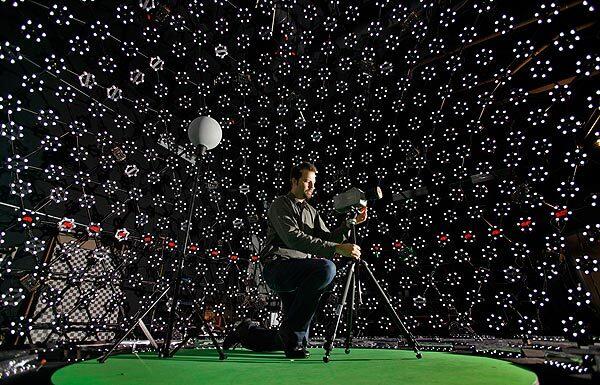
Paul Debevec of USC’s Institute for Creative Technologies works with “light stage” capture devices and the image-based facial rendering system developed for character relighting in motion pictures. The techniques based on Debevec’s work have been used in several major motion pictures, including “The Matrix,”
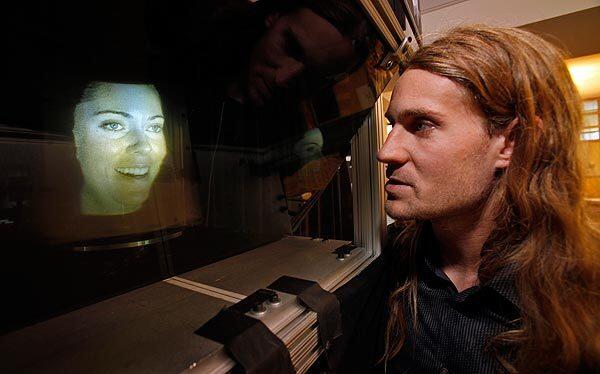
Research programmer Andrew Jones watches a 3-D projection called “headspin” that utilizes images from the light stage projected on a spinning mirror. The technology is used in live 3-D teleconferencing. (Al Seib / Los Angeles Times)
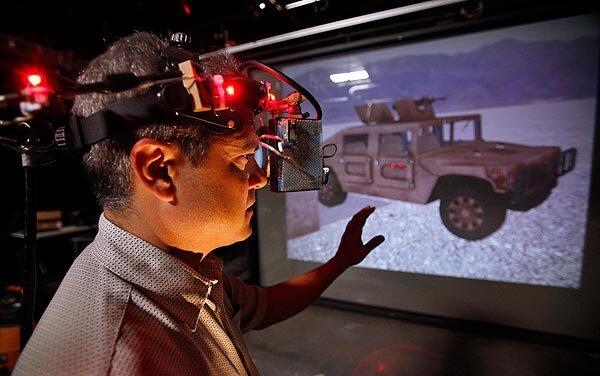
Mark T. Bolas, associate director of the mixed-reality lab, wears a head-mounted display while viewing a scene through specialty lenses. (Al Seib / Los Angeles Times)
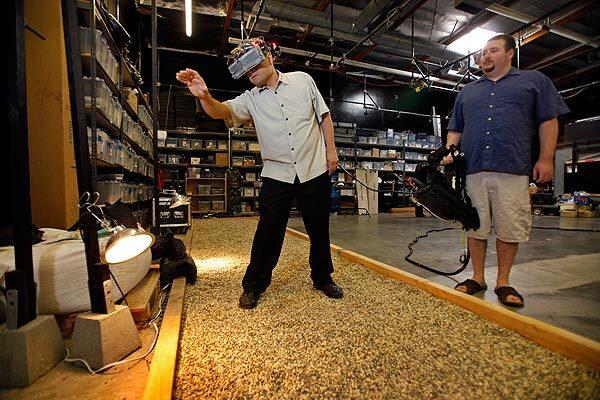
Bolas, left, wears the head-mounted display while walking on gravel so he can get the mixed-sensory experience while viewing a scene through specialty lenses. Evan Suma, right, holds a backpack that can be worn by the participant tethered to the system in the mixed-reality lab. (Al Seib / Los Angeles Times)
Advertisement
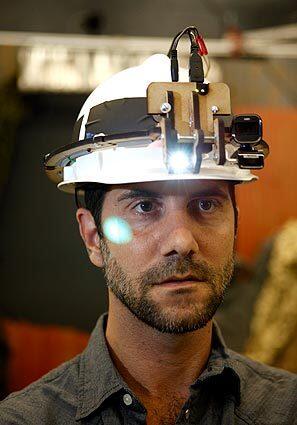
David Nelson, project manager in the mixed-reality lab, can see and interact with an image projected on retro-reflected screens simulating a specific environment. (Al Seib / Los Angeles Times)
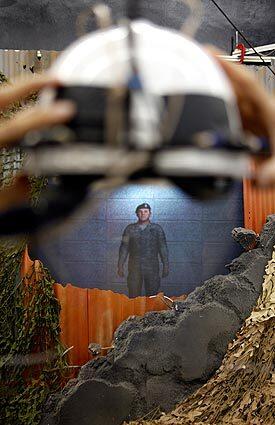
View of the image that is seen when wearing the head-mounted projector, which allows a person to see and interact with an image projected on retro-reflected screens. (Al Seib / Los Angeles Times)
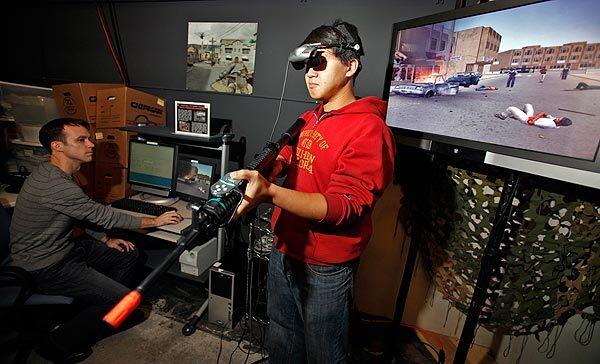
Technical artists Brad Newman, left, and Joe Yip at “Virtual Iraq,” a virtual reality exposure therapy tool used for treating combat-related post-traumatic stress disorder. (Al Seib / Los Angeles Times)
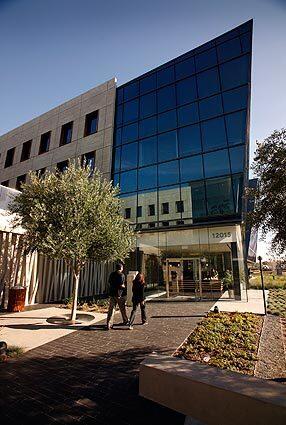
The exterior of







